

| This modern museum of about 45,000 square meters is located in Chapultepec Park, an appropriate location with historic associations, among others being the place in the Valley where the Aztecs first settled. This museum opened in 1964 with the focus of showcasing the contributions of Mexico's pre-Hispanic cultures. It is considered one of the outstanding museum facilities in the world. | ||

|
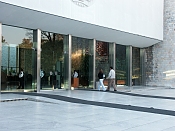
|
The entrance facadeIt is constructed of white marble from Santo Tomás, Puebla--a reminder of the common use of stone in the monumental buildings of Mexico's pre-Hispanic cultures. |
| The front facade bears the coat of arms of Mexico, an eagle perched on a cactus devouring a serpent--an emblem of pre-Hispanic origins. | 
|
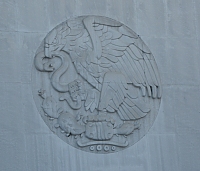
|
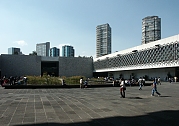
|

|
The monumental courtyardExhibit halls surround the central courtyard. The decorative aluminum grill work on the upper floors by Manuel Felguérez evokes the serpent motif in Puuc style buildings. |
The umbrella roofThe umbrella roof, in the shape of an inverted pyramid, is supported soley by the central column, which is also a fountain. This courtyard was inspired by the architecture of the Nunnery Quadrangle at Uxmal. The pool in the courtyard area beyond the the roof contains lotus and papyrus; a metal shell contains a clock that trumpets the passing of the hours. | ||
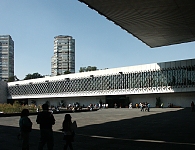
|

|
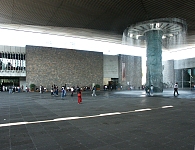
|
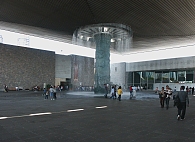
|
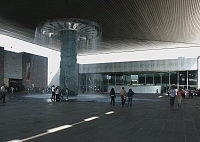
|
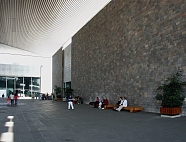
|

|
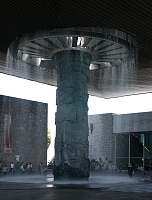
|
The hammered bronze column and fountainThe column of hammered bronze was created by José and Tomás Chávez Morado. It represents the mythological tree important to pre-Hispanic Indians and depicts in relief aspects of Mexico's history. |
The hammered bronze column and fountainAmong other symbolic representations, the column depicts the eagle and the jaguar, which signify opposing elements of the universe. |
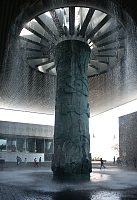
|
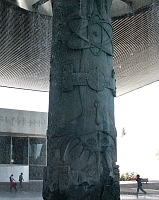
|
 Go to the Mexico Index.
Go to the Mexico Index.
 Click here to return to index of art historical sites.
Click here to return to index of art historical sites.
 Click here to return to index of artists and architects.
Click here to return to index of artists and architects.
 Click here to return to chronological index.
Click here to return to chronological index.
 Click here to see the home page of Bluffton College.
Click here to see the home page of Bluffton College.
